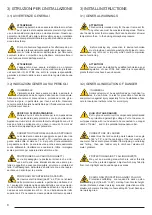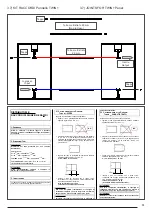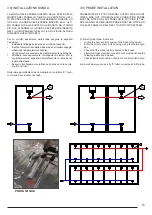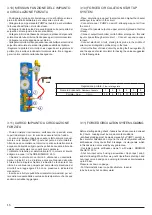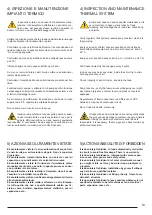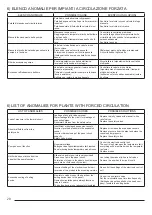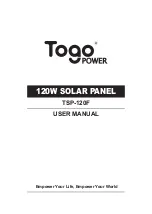
5
1.8) ANTIFULMINE E PROTEZIONE DA
SOVRATENSIONE
Se nel fabbricato è presente un impianto parafulmine, l’impianto
del pannello deve essere collegato a tale impianto. Per l’integra-
zione deve essere instaurato un collegamento elettrico tramite
cavo in rame (sezione minimo 10 mm2) fra i telai di montaggio e
la tubazione. Le tubazioni devono essere collegate elettricamen-
te con il collegamento equipotenziale principale tramite un cavo
dotato di sezione minima di 10 mm2. Rispettare le norme locali
per la protezione contro i fulmini. In ogni impianto deve essere
realizzao un collegamento equipotenziale dell’antifulmine secon-
do la norma ENV 61024-1 e norma VDE 0185.
1.9) CARICO MASSIMO NEVE E VENTO
Gli effetti del carico neve e vento possono avere influenza sui
sistema di fissaggio, causando possibili problemi meccanici. Per
avere un’indicazione dell’altitudine operativa massima dei pan-
nelli in relazione alla zona di carico di neve e della pendenza
della copertura con altezza dell’edificio sino a 20 metri si può fare
riferimento alla norma DIN 1055. Al fine di evitare danni causati
da forti raffiche di vento i pannelli solari devono essere assicurati
sufficientemente aalla copertura. Sarà cura dell’installatore rea
-
lizzare un adeguato sistema di ancoraggio in base alla tipologia
di teto e alla zona dclimatica in cui viene effettuata l’installazione.
E’ responsabilità della ditta installatrice rispetare la normativa vi-
gente ed eseguire i lavori secondo la regola dell’arte.
1.10) TRASPORTO E MOVIMENTAZIONE
Non utilizzare una scala per trasportare il materiale e i pannelli
sul tetto. Premunirsi contro la caduta dal tetto. Non usare i rac-
cordi del pannello come ausilio per il trasporto. Usare i seguenti
ausili: cinghia da trasporto, ventosa 3 punti, scala speciale per
tetti, carrello elevatore, impalcatura. Smaltire l’imballaggio di tra-
sporto secondo la procedura di riciclaggio più compatibile con
l’ambiente.
1.8) LIGHTING AND OVERVOLTAGE PRO
-
TECTION
If there is a lightning protection system, the panel system must
be connected to such installation. For the integration an electri-
cal connection must be established via copper cable (minimum
section of 10 mm²) between mounting frames and the pipeline.
Pipes must be electrically connected with the principal electrical
bonding through a 10 mm² minimum section cable. Local rules
for the protection against lightning must be respected. In each
system an electrical bonding of the lightning protection must be
provided according to the ENV 61024-1 and VDE 0185 stan
-
dards.
1.9) MAXIMUM WIND AND SNOW LOAD
The effects of the snow load and wind can affect the fixing sy
-
stems, and cause mechanical problems. For an indication about
the maximum operating altitude of the panels relating to the
snow load zone and to the slope of the roof having the height
of the building up to 20 meters, you can refer to the norm DIN
1055. In order to avoid damages caused by strong wind gusts,
the solar panels must be adequately assured to the coverage.
The installer will provide to the realization of a suitable ancho-
rage system according to the type of the roof and the climatic
zone where the installation will be carried out. The installation
company has the responsibilities on the respecting of the cur-
rent regulation and workmanlike performed.
1.10) TRANSPORT AND HANDLING
Do not use a ladder to carry the installation material and pa-
nels on the roof. Take precautions against falling. Dispose of
transport packaging according to the recycling procedure more
suitable with environment. Do not use panels connections as
transport aid. Use the following aids: belt, three points suction
cup, special ladder for roof, lift truck, scaffold.








